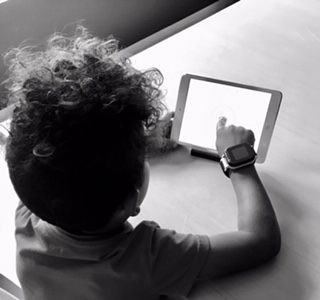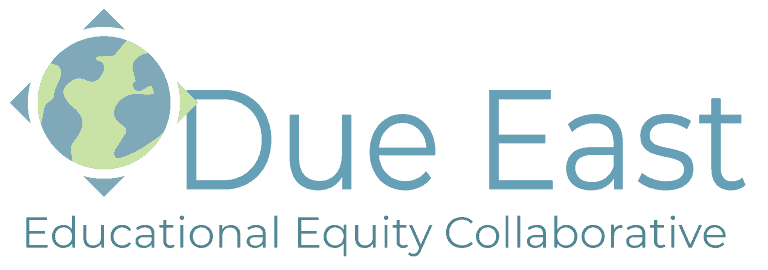Virtual Learning Take Two: Remembering Relationships and Fostering Equity
As a teacher who tries to root her pedagogy in educational equity, last spring’s experience of distance learning was challenging and draining. It became apparent to me (and many, many others) that the distance learning model was underserving Black and Brown students even more than traditional school has been for decades. Relationships, collaboration with families and between students, active and engaging lessons, and social-emotional learning all went out the window in a rush to shift school online.
And the worst part? Because I was tired and stressed the whole time, I was also slipping into poor teaching practices upheld by the system. I was engaging in “panicgogy” instead of welcoming, equitable, and relationship-focused virtual classroom practices.
And it wasn’t just me. During distance learning the fundamental relationship-building was lost for many students who need it most in order to create trust and safety in the learning community (and was replaced almost entirely by a task-oriented approach). Communication with families often focused on deficit (think: “your child isn’t turning on their camera!” shaming). And the inequities in approaches to grading have increased under the harsh spotlight of distance learning. Last spring—in a rush to make sure I had content and curriculum ready to go online—I didn’t meet some of the expectations I usually hold for myself as an educator and fell into these harmful patterns. I have since had a chance to reflect and would like to offer some of the things I will do to make virtual learning more successful for myself, my students, and their families:
Get all voices in the “room” within the first eight minutes. This is a community-building tool to which I strictly adhere during in-the-building school. Every time there is a new term I am sure to include all student voices in a community-building activity on the first day—within the first eight minutes. (I don’t know why eight, to be honest… it’s something I heard somewhere—there might be really good research behind it?) Unfortunately, I did not do this on our first Zoom call as a class and I’m convinced it is part of the reason why my students were silent on all of our calls. I worked really hard to engage them and have everyone feel connected, but I’m quite certain they had no sense of belonging to a group or community as a class. At least not enough to speak up when asked a question (or worse—when they had one).
How am I trying to remedy this? I’m working in more student response. They can use the “yes” or “no” buttons or other responses (emojis!) under ‘Participants’ and then I can call on a couple of students to unmute themselves to share their thinking. I’m also asking students to answer questions in the ‘Chat’ so they can choose whether it’s to the whole group or privately to me. And ‘Breakout’ rooms for small group work and collaboration to ensure I am not the sage-on-the-stage; we need more sharing, reciprocal teaching, and student-to-student talk time. This is one way to encourage building relationships between students as well as with them. Each breakout room should begin with a relationship-building prompt before engaging in more academic discourse.
Weeks one and two should be for relationship-building and social emotional learning only. Last spring I thought students would crave routine and predictability because of how quickly schooling changed. But the longer we were out of the classroom, the more I realized that the routine was monotonous, task-oriented, and frankly, boring. Students needed more time to connect and muddle through the experiences they were having. Yes, we completed a novel and we had frequent checks for understanding, but the way I ran my course was not student-centered. When I begin a new course in person I start to weave in content at the very end of the first week of class as part of the get-to-know-you activities, but I realize now that it takes even longer in a virtual environment to build community and feel safe enough for learning to take place.
How am I trying to remedy this? Relationships before rules, community before content, and SEL before standards. I have no intention of introducing content until I get to know students. Even pre-assessments can wait until I’ve made contact and know how everyone is doing, what they need, how they define success, and the best ways to communicate throughout the term. There should be space in synchronous class periods simply to socialize, laugh, and enjoy each other’s company. I am also going to be more intentional, consistent, and predictable with my own communication to students and families (especially families of the global majority) so we can collaborate more effectively. I intend to use TalkingPoints as a tool to surmount language barriers, too.
More assignments should be ongoing and for feedback only. While I think assessment is an important tool and the grade book can be used as a method of communication, I wish I had held off on grading. Here’s why: I was still trying to contact students who had not yet shown up, let alone assess their learning. Students and families who were struggling to access online learning continued to fall further behind as I assigned more work to the rest of the group. If I had started with, say, a double-entry journal (shared on a Google Doc between the student and myself) I could have commented on them and engaged in a back-and-forth with students who were showing up…without widening the gap. This would also have provided another way to communicate with students who really needed relational connection and would have shown that learning is a process, not a destination (at a grade). Giving assignments simply to get something into the grade book exacerbates inequities and grades don’t reflect true learning anyway. The detrimental effect grading during online learning has is greater than any state standard or district benchmark.
How am I trying to remedy this? Again, I’m going to hold off introducing content until I’ve reached all students. I’ll begin with a lot of personal writing and some online (asynchronous) discussion boards so we can all communicate—and so students who are participating right away can get feedback—while I work to reach those who are not yet present. I’m also going to start giving audio and video feedback to students on their work when possible; my hope is that this makes it more personal for them, faster for me, and formative for all of us.
Send weekly communication to families. While I did a pretty good job of following up with students and families who were slow to engage in distance learning, I wasn’t truly proactive. Sure, I sent an initial email to all guardians with directions to access our Schoology course (and some did!), but I really didn’t give them any other support or guidance (until the student fell behind). One of my colleagues created a weekly newsletter using Smore that clearly lays out the activities and assignments for students and their families. The level of engagement in her distance learning courses was higher than mine because she continued to proactively engage families in a way that connected them to their students’ learning.
How am I trying to remedy this? I am going to send a weekly email to families that includes the “landing page” for class for the week, announcements, office hours, and other ways to contact me. This email will also include a question for families so there is an easy way to keep communication lines open. (I will also continue to reach out to students and families who are not showing signs of engagement, but that’s not the proactive communication I’m talking about here.) Partnering with families—instead of focusing on deficit or lack—will lead to increased achievement and a sense of belonging that will hopefully continue (yay—relationships!) once in-person classes resume.
Address current events, social justice issues, and inappropriate online behavior. In the fall it felt easier to stick to muddling through a novel that I had taught before; teaching this way is completely inappropriate, inauthentic, and even racist. To not address the global pandemic and current racial reckoning head-on is a disservice to all students—especially those on whom the impact of those issues is greatest. But teaching through a social- and/or racial-justice lens is also sure to bring up discussions that are challenging to navigate and student behavior that is inappropriate.
How am I trying to remedy this? First, I have no intention of starting with a novel. Inspired by the podcast “Pod Save the People,” I am going to ask students to bring articles, news stories, video clips, songs, etc. that interest them and we will discuss in small groups and as a class. It seems likely to me that we will have some dissent and differing opinions in the class and I intend to be ready for that. We will practice asking questions and disagreeing with an idea instead of a person, but more importantly I will be prepared to talk to students both publicly and one-on-one about any relationship-harming behavior and comments. We will come up with class norms about conduct in a brave space and restorative measures will be taken when they are broken.
Don’t sweat the small stuff; model calm and compassion. For me it is so easy to be swept away by the tides. When teachers are sending millions of email and text messages looking for clarity, administration is swamped with meetings and becoming defensive when teachers ask questions, and students are panicked about turning in “late” work or getting their Schoology quiz graded ASAP, I can become incredibly overwhelmed. If I could go back and do it over again, I would want to model the calm and compassion that I need to get through distance learning during a pandemic. I want to be that person—that steady and consistent force—for my students, their families, and my colleagues. My biggest mistake has been frequently getting caught up in it all and forgetting to see multiple perspectives.
How am I trying to remedy this? I’m keeping track of my time in front of a screen versus my time cooking or spent outdoors (or doing other things I love). I’m trying to take some deep breaths before responding to the email and text message chains. I’m trying to make sure I do something with and for others every day (this includes my students!). And connecting with former students helps, too; they remind me the importance of relationships (even when we’re not face-to-face). I’m trying to express gratitude daily. I will not participate in the urgency that is a hallmark of white superiority culture.
As we know, distance learning has brought to light many of the inequities in the education system, but they have always been there. Perhaps this is an opportunity to reflect and correct—not just for individual educators, but for the system as a whole. Focusing on relationships first, feedback and learning as a process, the assets students and families bring, and social-emotional health could be revolutionary as we walk back into our schools (whenever that may be). While it has been painful to learn some of these lessons during distance learning, they are small steps toward immediate improvement as well as educational equity in the long run… and for that I am grateful.


